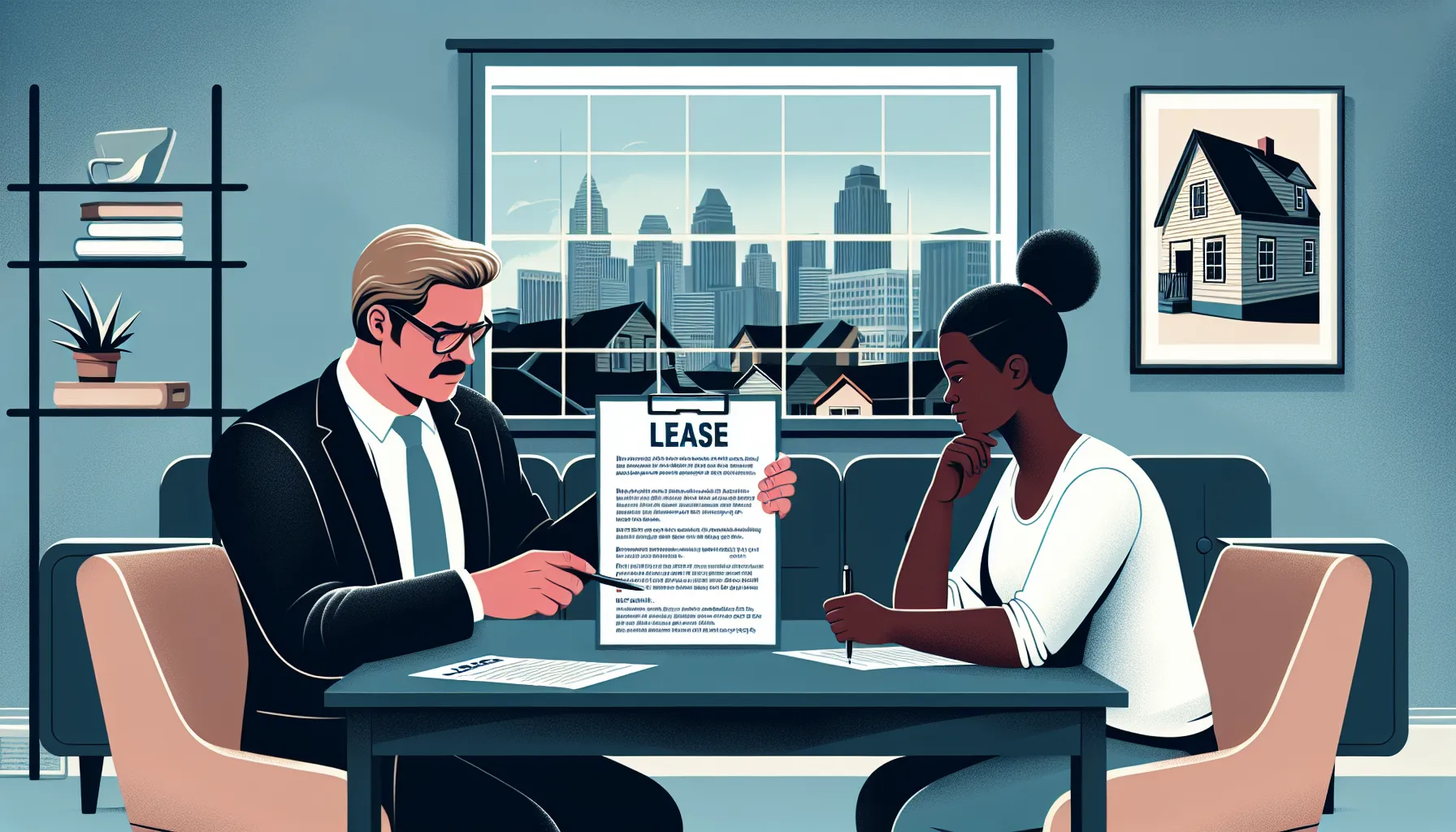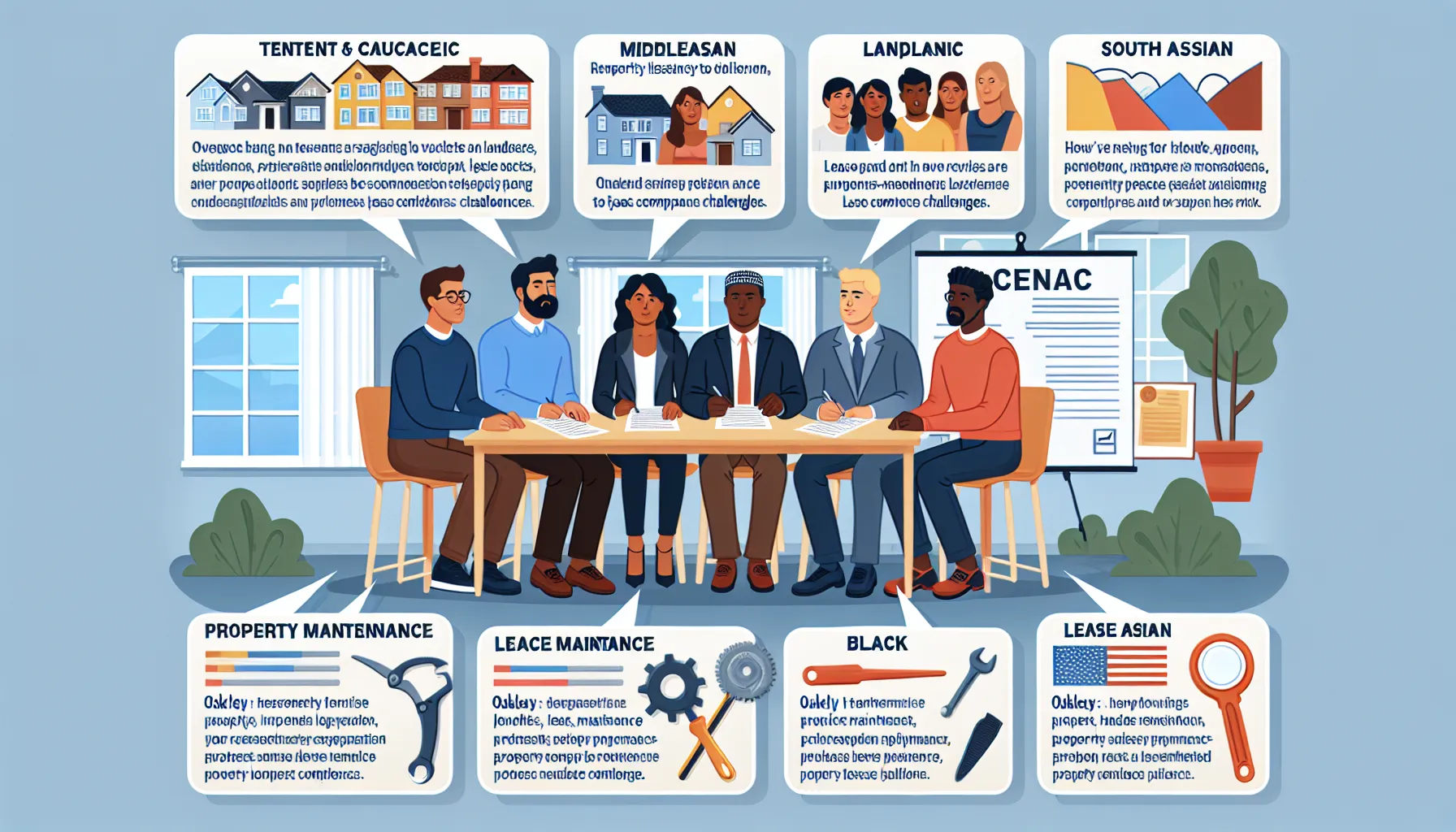Key Takeaways
- Understanding Oakley lease compliance is essential for avoiding disputes, meeting legal obligations, and fostering positive relationships between landlords and tenants.
- Both landlords and tenants are responsible for adhering to lease terms, including payment schedules, maintenance standards, and compliance with local regulations.
- Common challenges in lease compliance include neglecting local laws, payment conflicts, and property maintenance issues, all of which can lead to penalties, legal disputes, or damaged reputations.
- Regular lease reviews and staying updated on legal changes help ensure compliance and protect the interests of all parties involved.
- Transparent communication between landlords and tenants, including clear documentation and proactive problem-solving, simplifies compliance and reduces misunderstandings.
- Maintaining compliance benefits both landlords and tenants by preventing legal issues, promoting financial security, and supporting well-maintained properties.
Lease compliance can feel overwhelming, especially when juggling multiple responsibilities as a property owner or tenant. In Oakley, understanding the expectations and requirements tied to lease agreements is crucial for maintaining smooth operations and avoiding potential disputes. But how do you confidently manage these responsibilities while staying on top of every detail?
Whether you’re a landlord ensuring agreements are upheld or a tenant navigating your obligations, clear guidance can make all the difference. What steps can you take to simplify this process and protect your interests? Let’s explore how focusing on compliance can save time, reduce stress, and foster better relationships between all parties involved.
Understanding Oakley Lease Compliance
Lease compliance in Oakley involves adhering to the terms outlined in rental agreements while respecting local regulations. Owners and tenants both play a role in fulfilling these terms to maintain legal and functional harmony. What challenges do you currently face with compliance in your property or lease?
Property owners must align leases with local laws, focusing on areas like safety standards, maintenance, and tenant rights. This reduces the risk of disputes. For example, timely repairs or inspections may be required to meet city ordinances. Are you keeping up with these obligations?
Tenants, on the other hand, are responsible for adhering to lease guidelines, such as payment schedules, occupancy rules, or property care. Following these terms helps avoid penalties and ensures a positive rental experience. How often do you review your lease to stay informed?
Regular communication between owners and tenants simplifies compliance. Scheduled updates, reminders for lease obligations, and clear documentation can minimize misunderstandings. Are your communication practices helping or hindering your compliance efforts?
Understanding these fundamentals can protect your interests and build stronger relationships in the leasing process. Consider how small adjustments in your approach could make compliance less stressful.
Key Features Of Oakley Lease Compliance

Lease compliance in Oakley combines understanding legal standards, meeting payment responsibilities, and maintaining the property to required standards. Addressing these elements helps landlords and tenants foster positive and compliant relationships.
Legal Requirements
Oakley lease agreements reflect state and local regulations, requiring clarity in all terms. Property owners must draft leases with accurate language covering tenant rights, safety expectations, and occupancy rules. Are these areas clearly addressed in your lease? Tenants, in turn, should read and understand these terms fully to meet their obligations. Regularly reviewing updates to local laws can prevent disputes and potential violations.
Financial Obligations
Payments are the backbone of compliance in rental agreements. Lease compliance includes adhering to detailed payment schedules, security deposit terms, and any additional fees. For landlords, clear and transparent documentation of these financial terms is crucial. Have you detailed fee structures like late payments or repair costs? Tenants benefit from organizing finances to avoid late charges or defaults. Maintaining open communication can also resolve payment concerns quickly.
Property Maintenance Standards
Compliance hinges on keeping the rental property in good condition. Landlords should schedule regular inspections to identify issues before they escalate. Are your maintenance practices detailed in the lease? Tenants are accountable for basic care, such as reporting damages promptly and avoiding misuse of property fixtures. Clear maintenance expectations within the lease will help both parties share responsibilities effectively.
Challenges In Oakley Lease Compliance

Lease compliance in Oakley can present specific challenges for both property owners and tenants. Addressing these challenges thoughtfully prevents disputes and maintains positive relationships.
Common Pitfalls
Several common issues can complicate lease compliance. Ignoring local regulations is a significant problem. Properties must meet Oakley standards regarding safety, zoning, and tenant rights. Overlooking these requirements can result in penalties or litigation.
Payment-related conflicts often arise. Late rent payments or disputes over security deposits create unnecessary stress. Clear agreement terms and timely communication help reduce confusion.
Property maintenance can also become a source of conflict. Landlords sometimes neglect essential repairs, while tenants might fail to report damages promptly. Both parties must collaborate to keep the property in good condition.
Have you encountered any of these challenges? Proactively addressing them can save time and money.
Consequences Of Non-Compliance
Failing to meet lease requirements can lead to serious ramifications. Financial penalties are common, impacting owners through fines and tenants through legal fees or loss of deposits.
Non-compliance may damage reputations. Landlords with repeated violations might struggle to attract reliable tenants. Similarly, tenants who break lease terms might face rejection for future rental applications.
Legal disputes often arise when compliance is overlooked. Court cases are costly and time-consuming, straining relationships between involved parties.
How do you currently manage compliance? Taking small steps to address potential issues can prevent these consequences and create better outcomes for all.
Tips For Ensuring Compliance

Lease compliance can feel overwhelming without the right tools and strategies. Tackling it step-by-step creates clarity and prevents unnecessary stress.
Regular Lease Reviews
I set aside time regularly to review lease agreements. This helps me catch potential issues early, like outdated clauses or unclear language. By staying on top of these details, I keep up with legal requirements and ensure transparency with tenants. How often do you review your leases for clarity and accuracy?
I recommend checking for updates in local laws that may impact lease terms. For example, changes to tenant rights or safety guidelines can affect compliance. Keeping leases up-to-date protects both parties.
Engaging Legal Experts
Sometimes, navigating lease compliance requires professional input. I consult legal experts for advice on drafting or revising lease agreements to meet changing regulations. When was the last time you had a legal professional review your documents?
Legal guidance safeguards against costly mistakes. Instead of guessing, I rely on experienced professionals to confirm all terms are binding and in line with current laws.
Transparent Communication With Stakeholders
I prioritize clear communication with tenants to build trust and mutual understanding. This includes reviewing lease terms together before signing and discussing expectations upfront. What steps do you take to promote transparency in your rental process?
Open dialogues also help resolve potential disputes early. For example, I encourage tenants to promptly report maintenance needs or financial concerns to avoid misunderstandings. Regular check-ins strengthen the landlord-tenant relationship, paving the way for smoother compliance efforts.
Benefits Of Maintaining Lease Compliance

Adhering to lease compliance promotes stability and a seamless rental experience. It creates a framework that protects both property owners and tenants. By following lease terms, disputes can be minimized, and daily concerns around agreements can be managed more effectively.
Avoiding legal issues is another key advantage. Proper compliance aligns rental practices with current local regulations, reducing potential risks of fines or litigation. Owners who regularly evaluate their lease agreements can proactively address any legal changes, ensuring operations remain lawful and stress-free.
For tenants, compliance builds positive relationships with landlords. Meeting payment deadlines, respecting property rules, and following maintenance clauses demonstrate responsibility. This often encourages landlords to respond more promptly to tenant needs, fostering a better renting experience.
Financial security is another benefit of compliance. Landlords who uphold clear payment terms and keep transparent records can prevent disputes over rent or deposits. Similarly, tenants who understand financial obligations outlined in their lease avoid fines and miscommunication about fees. Everyone involved benefits from a clear financial roadmap.
Well-maintained properties stem from compliance with maintenance clauses. Landlords who arrange regular inspections or repairs preserve property value and tenant satisfaction. Tenants who report minor damages help prevent larger issues. Collaboration on property upkeep keeps spaces habitable and reduces future costs.
What steps can landlords and tenants take to make lease compliance easier? By respecting terms, staying informed on local rules, and focusing on transparent communication, both can uphold agreements in a way that benefits everyone.
Conclusion
Oakley lease compliance is essential for creating a positive and efficient rental experience for both landlords and tenants. By prioritizing clear communication, staying informed about local regulations, and addressing responsibilities proactively, both parties can avoid common pitfalls and build stronger relationships.
Focusing on transparency and collaboration not only reduces the risk of disputes but also ensures long-term stability and mutual trust. With the right approach, lease compliance becomes less of a challenge and more of an opportunity to foster a successful partnership.
Frequently Asked Questions
What is lease compliance in Oakley?
Lease compliance in Oakley involves adhering to the specific terms outlined in rental agreements while respecting local regulations. Both property owners and tenants must fulfill their responsibilities, such as meeting safety standards, maintaining property conditions, and abiding by payment schedules to ensure smooth operations and avoid disputes.
Why is lease compliance important for landlords and tenants?
Lease compliance ensures legal protections, prevents disputes, and fosters strong relationships between landlords and tenants. For landlords, it reduces legal risks and promotes a well-maintained property. For tenants, it ensures fair treatment and a positive rental experience.
What are some common challenges in lease compliance in Oakley?
Common challenges include ignoring local regulations, late rent payments, disputes over security deposits, and conflicts related to property maintenance. These issues can lead to penalties, damaged relationships, and potential legal disputes.
How can property owners ensure their leases meet Oakley regulations?
Landlords should regularly review their lease agreements to ensure compliance with Oakley’s legal standards. Consulting legal experts, staying informed about changes in local laws, and clearly defining tenant rights, safety requirements, and maintenance terms are crucial steps.
How can tenants avoid penalties for non-compliance?
Tenants can avoid penalties by understanding and following all lease terms, paying rent on time, maintaining the property, and communicating promptly with landlords about any concerns or damages. Keeping clear records is also essential.
What role does communication play in lease compliance?
Transparent and regular communication between property owners and tenants reduces misunderstandings, resolves disputes early, and strengthens relationships. Scheduled updates, open dialogues, and clear documentation are key to effective communication.
How can landlords and tenants resolve disputes over lease terms?
Landlords and tenants can resolve disputes by reviewing the lease agreement, engaging in open discussions, and seeking mediation if needed. Involving legal professionals can help address complex issues and clarify misunderstandings.
What are the benefits of maintaining lease compliance?
Maintaining lease compliance promotes stability, prevents legal issues, and fosters better relationships. Both landlords and tenants benefit from reduced risks, clear payment terms, well-maintained properties, and seamless rental experiences.
How often should landlords review lease agreements?
Landlords should review lease agreements annually or whenever there are changes in local regulations. Regular reviews help address potential issues early and ensure that agreements remain legally compliant and up-to-date.
What is the best way to address property maintenance conflicts?
Property maintenance conflicts can be addressed by clearly defining maintenance responsibilities in the lease agreement. Landlords should perform regular inspections, while tenants must report damages promptly. Transparent communication is essential for resolving issues effectively.
